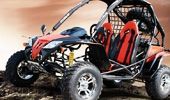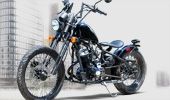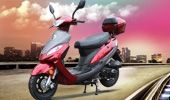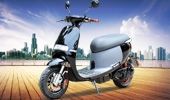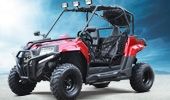If you're at all interested in off-road driving, you've come across the acronyms UTV and ATV. The first stands for "utility vehicle," and the second stands for "all-terrain vehicle." So what separates the two? What are the advantages and disadvantages when you compare them to each other? Read on to learn everything you need to know about both of these vehicles.
The Basics
First of all, both UTVs and ATVs are small off-road vehicles with just enough room to seat one, two, or (more rarely), four people. They don't have completely enclosed cabins like a car has, so they carry less weight, but they also have less safety equipment. Both UTVs and ATVs also come with four wheels (many ATVs used to have three wheels, but four wheels is standard now because of safety and stability needs). As for the differences:
ATVs are smaller than UTVs and usually only have enough room for passengers. This makes them efficient vehicles and light enough for a single person to pull out of a ditch or onto a truck bed.
UTVs come with extra space for cargo, which is how it lives up to the "utility" part of its name. This means that UTVs are bigger and less efficient than ATVs, but they give you more space for gear and equipment.
Fun Drives
If fun is all you want from your off-road four-wheeler, then an ATV is probably your best bet. It's fast, it's nimble, and the light weight means you won't have much trouble pulling it back onto the trail if you happen to lose control or wander too far from the established paths. Even if you don't need to climb out and push, the ATV is light enough for you to change the way it corners, by leaning left or right. It's not as important as it is on a two-wheeled vehicle such as a dirt bike, but it's a skill you'll need to master.
UTVs are bigger and a bit less fun to drive, but they do have their good points. UTVs have more customization options and parts than the average ATV, so you can do a lot more to personalize a UTV and make it better for practical uses, for appealing visual designs, and for better handling and speed on off-road tracks. UTVs can also come with semi-enclosed cabins, so you can also add features such as heating systems and stereo audio systems that wouldn't work on an ATV.
Work Needs

Image via Flickr by qnr
Because the UTV has room for cargo, it's a much more practical design for anyone who needs a small, four-wheeled off-road vehicle for their job. For instance, you might need to get around on the pedestrian paths of a public park so you can clear out any fallen limbs or other obstacles, so a small vehicle that can carry plenty of tools and cargo is perfect for this kind of job.
The UTV's customizability also comes in handy for professional uses. The right set of ice tires can make it much easier to navigate on a snowy road, something that can come in handy if you're part of a crew trying to clear roads or railroad tracks for traffic. You can even fit a UTV with a dump bed that can carry small loads of dirt, gravel, and soil to and from construction sites.
However, the ATV does have its place during working hours, too. The ATV has a lower cost, both up front and over time, and since it's smaller and faster, it's perfect for situations in which you need someone to scout around or patrol an area. A construction site that needs security, for instance, could improve that security by having people riding around on ATVs. Racing Options

Image via Flickr by Trailers of the East Coast
Another reason to break out a four-wheeler is to participate in an off-road motorsport race. The ATVs and UTVs should be racing in their own categories, but even if they never compete against each other directly the ATV will pull ahead. The UTV can be a fast vehicle, but the ATV is lighter, smaller, and able to clear obstacles that would stop a UTV in its tracks. So if you want to impress your friend with the speed of your ride, your best bet is to have them stand on the sidelines and show them everything an ATV can handle.
Prices
In terms of the starting prices you'll encounter, the ATV has the UTV beat. The ATV is a smaller machine and it uses fewer resources, so for that reason alone, its price range is lower than that of a UTV. You can always find a more expensive model, with a more powerful engine and better chassis design, but that's just as true about UTVs and a UTV with the same quality and performance levels of an ATV will be more expensive. UTVs can also cost more because you need to buy and install accessories.
Compared to Cars
If you compare both the ATV and UTV to an automobile, the UTV definitely has a closer resemblance. As a class of vehicle, the UTV much more closely resembles the car, especially since it's more likely to have an enclosed cabin with room for two or four passengers. By contrast, the ATV is closer to a motorcycle in the following ways: how it works, the significance of your body weight, and the way you lean into it. The main difference is that the ATV is much more stable thanks to having twice the number of wheels.
The ATV and UTV vehicle classes are closely related, but there are some major differences that separate them. The ATV is smaller, nimbler, lighter, and it costs less to buy, on average. The UTV is larger, heavier, and more expensive, but it also has more accessories and more ways to change and personalize the design. Both vehicles have their place, including at the workplace and afterward, when you just want to have fun, but each one specializes in offering different benefits.
Re-post our material is not allowed without permission.








